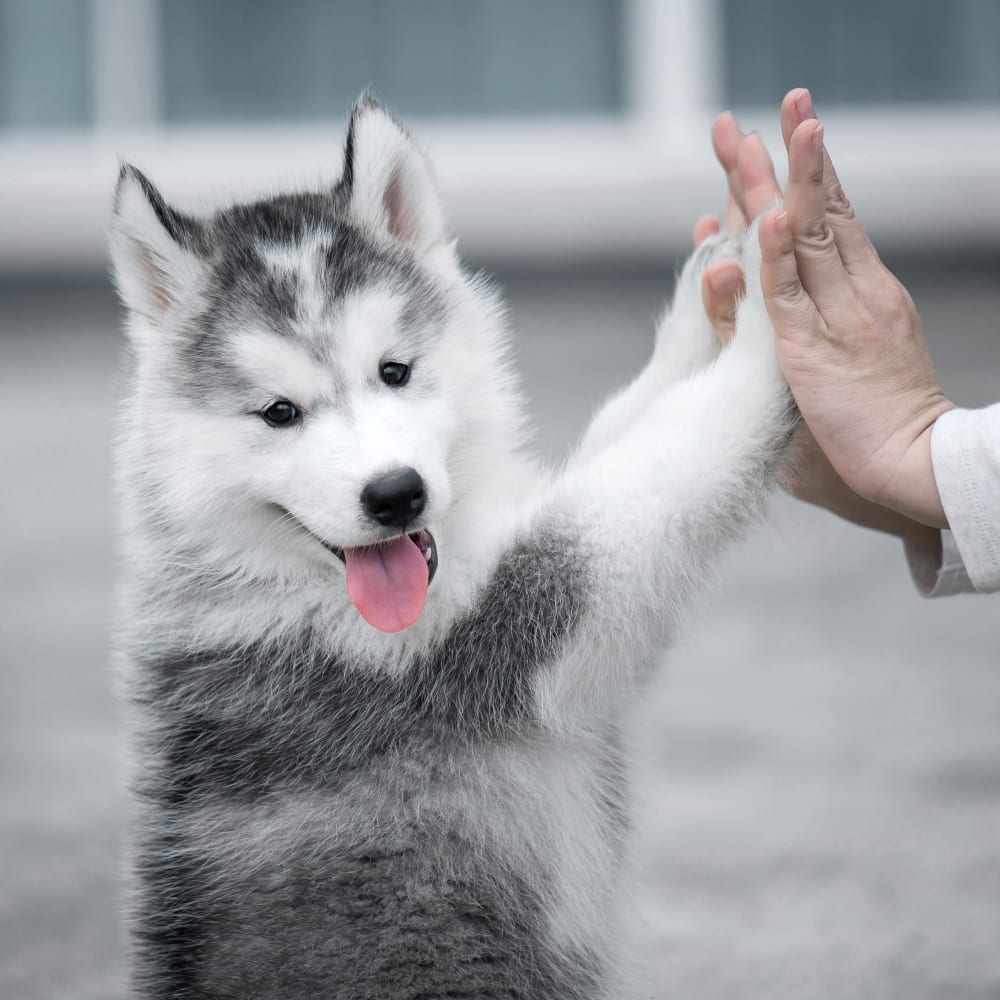Prevent Hip Dysplasia
Hip dysplasia is a growth-related deformity of the hip joint, where the ball and socket fail to develop evenly. This causes looseness in the joint, leading to degenerative joint disease or osteoarthritis as the body tries to stabilize the hip.
Lameness severity doesn't always match X-ray findings – some dogs with major issues show no symptoms, while others with minor changes may have significant pain and lameness.
At Gentle Doctor Animal Hospital, we provide JPS surgery as a preventive measure so young dogs can develop and grow without the risk of developing hip dysplasia.

JPS Surgery to Prevent Hip Dysplasia
Performed between the ages of 12-22 weeks, JPS is a minimally invasive surgery that closes a growth plate at the bottom of the pelvis. This results in selective growth of the pelvis and the hip cup (acetabulum) increasingly covering the ball (femoral head) as the puppy grows during the following four to six months. Patients may be able to go home the same day after this procedure.
During those four to six growing months, following JPS surgery, leash walks are acceptable but strenuous off-leash exercise is discouraged until follow-up exams at 10 months of age confirm the dog will have pain-free hip function.
Hip Dysplasia FAQs
Here are some of the most commonly asked questions about hip dysplasia in dogs:
- What causes hip dysplasia?
Hip dysplasia is a genetic disease that is affected by factors such as diet, environment, exercise, growth rate, muscle mass, and hormones. As this disease is most commonly seen in large breed dogs, these puppies should be kept at a normal, lean weight during growth, not overfed or encouraged to grow big.
One study of puppies at risk for hip dysplasia found that, when they were fed as much as they wanted to eat, two-thirds of the puppies went on to develop hip dysplasia. When they were fed measured meals, only one third of puppies developed hip dysplasia.
A study of German shepherds found that overweight puppies were almost twice as likely to develop hip dysplasia as their normal-weight counterparts. These studies have allowed food manufacturers to develop specially formulated diets for large-breed puppies.
Additional studies have shown that spaying or neutering at an early age may lead to an increased incidence of developing hip dysplasia in some dogs.
- Are certain breeds of dog more prone to hip dysplasia than others?
Yes; although any dog can be affected, hip dysplasia is predominantly seen in larger dogs such as German Shepherds, Saint Bernard’s, Retrievers, Old English Sheepdogs, Great Danes, Newfoundland’s, Mastiffs, and Bulldogs. Large mixed-breed dogs are also at risk for developing hip dysplasia and should be fed a special large breed growth diet their first year.
- How is hip dysplasia diagnosed?
A hip radiograph under general anesthetic is the preferred method for diagnosing hip dysplasia. Clinical signs and palpable joint laxity (positive Ortolani sign) may also indicate hip dysplasia. Any pet suspected of having hip dysplasia should be X-rayed as soon as possible. Research into genetic testing is ongoing, as the current available options are questionable in their validity.
- How does my dog's weight affect their hips?
Weight and rapid growth should be managed with measured amounts of low-protein dry food diets (20–21%) for rapidly growing large breed puppies from an early age and especially following JPS surgery until 12 months of age.
Obesity puts a lot of stress on your dog's joints. Being overweight can exacerbate a pre-existing orthopedic instability by placing a higher than acceptable load on the joints - providing a higher risk of hip dysplasia. Maintaining a healthy but athletic weight can be achieved by a quality diet and appropriate portion sizes.
Discuss diet options with your veterinarian. AAFCO guidelines require pet foods that are categorized for "growth" to specify if they have met additional guidelines just for large and giant breed puppies (i.e., dogs expected to be more than 70 lbs at their mature adult weight). If you have a dog that may be close to or above 70 lbs (conservative = above 50 lbs) as an adult, you should look for puppy foods that specify AAFCO Dog Food Nutrient Profiles for Growth/All Life Stages including for large and giant breed dogs.
- How does my dog's activity level affect their hips?
Damage to ligaments, tendons, and muscles that support the hip joint itself can cause the femur to become misaligned or result in degeneration of the hip joint structures from increased strain due to lack of support from associated structures. Further, high-impact activity can directly damage the bones and joints through repetitive trauma.
Ensuring your puppy's chance of injury is minimized through moderation of high-impact activity (reduce jumping, running, cutting, and other rambunctious activities) will help reduce their chance of experiencing hip dysplasia and other developmental orthopedic injuries. Leash walking is highly recommended.
New Patients Welcome
Gentle Doctor Animal Hospital is accepting new patients! Our experienced vets are passionate about the health of companion animals in O’Fallon and surrounding communities. Get in touch today to book your pet's first appointment.
Contact
Hours
Saturday Appointments Available
-
Click to View
- Monday:07:30 am - 06:00 pm
- Tuesday:07:30 am - 06:00 pm
- Wednesday:07:30 am - 06:00 pm
- Thursday:07:30 am - 06:00 pm
- Friday:07:30 am - 06:00 pm
- Saturday:08:00 am - 01:00 pm
- Sunday:Closed
